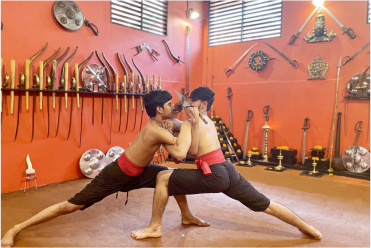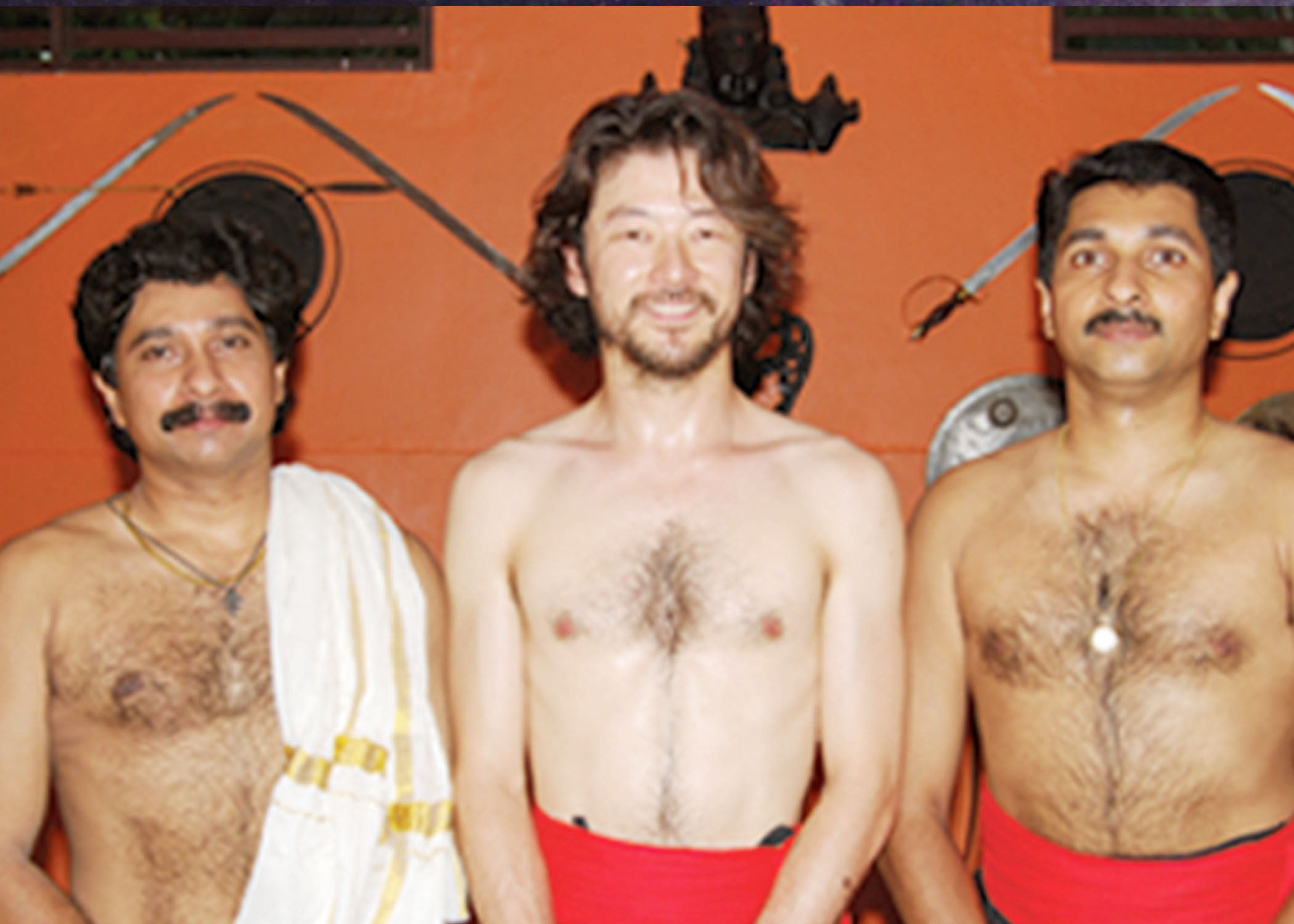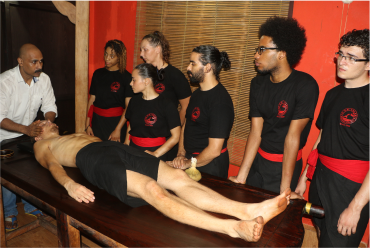Overview
The training of the student in the Kalari begins at a very early age of 7- years with an initiation ritual performed by the Gurukkal. Attendance in the Kalari is made a part of the daily routine and he goes through a series of symbolic rituals every day, before and after practice to acquire discipline and concentration. Kalarippayattu training is mainly divided into four parts called Meithari (body preparative exercises) Kolthari (training in wooden weapons),Ankathari (training in combat weapons), and Verum Kai Prayogam or Marma Prayogam.
Wearing a Katcha or loin cloth and smearing his body with oil, the student after prostrating before the deities and the Gurukkal begins his initial training with the Meithari system which forms the foundation for the entire repertoire of Kalarippayattu training. Meithari involves slow and controlled movements, focusing on developing body balance, coordination, and flexibility.
The second phase is known as Kolthari which involves training in wooden weapons like Kettukari 12 span staff and Cheruvati 3 span staff etc. Ottakkol is a special curved wooden weapon in the Kolthari repertoire which serves as a training instrument for coordinating the intricate movements of the body and feet and also as a stepping stone to the proper execution of the advanced Kalarippayattu techniques. Kolthari training involves basic strikes, blocks, and parries with weapons, as well as footwork and body movement. Various sequences of Kolthari lead one to the proper understanding of mind and body in action.
The third phase of training is Ankathari or combat training with weapons. This begins with Kattaram or dagger which is a knife-shaped metallic weapon for duels at close quarters which includes several locks and many elements of barehanded fighting techniques. Angathari involves more advanced techniques, including joint locks, throws, and grappling, using weapons. Swords and shields were the primary weapons of the medieval Kerala soldier. As the supreme combat weapon in the Kalarippayattu system, sword and shield training makes total use of the full range of body movements learned in the preliminary physical culture training. References to many of the present-day Kalarippayattu sword and shield techniques can be seen in the 4th-century texts of Agni Puranam and the Vedic works of Dhanur Veda. The techniques of Urumi or the flexible sword are an extension of the sequences learned in the sword and shield techniques to be used in mass combats.
The complex and rich repertoire of Kalarippayattu weaponry also includes highly accurate techniques of spear fighting and the classical sequences of the Mace, the weapon of the epic heroes. There is also the Marapitcha Kuntham, a duel between a swordsman and a man armed with a spear demanding distinct skills. Many advanced elements of empty-hand fighting is taught in the different sequences of Kathiyum Thalayum in which one learns to defend oneself with a common 2-meter-long cloth on one’s own shoulder called the Mundu.
Verumkai Prayoga (Marma Prayoga): Verumkai Prayoga is the stage of Kalarippayattu that involves unarmed combat and the application of pressure points or vital points in the body, known as Marma points. This stage emphasizes self-defense techniques and the practical application of Kalarippayattu for real-life situations.
Apart from these four stages, Kalarippayattu training also involves physical conditioning and mental preparation. Physical conditioning includes exercises such as yoga, strength training, and cardiovascular training. Mental preparation includes meditation and breath control, which are important aspects of Kalarippayattu training, as they help to develop focus, concentration, and control over one's mind and body.



 Learn
more
Learn
more




 sunilkalari@yahoo.com
sunilkalari@yahoo.com +91 9995929999, +91 7998525555
+91 9995929999, +91 7998525555


